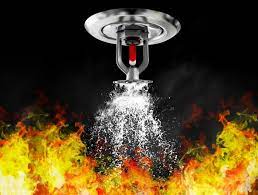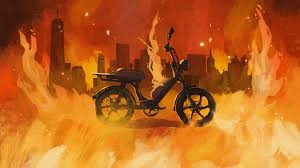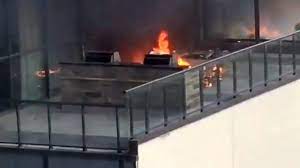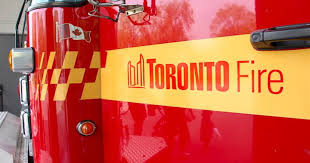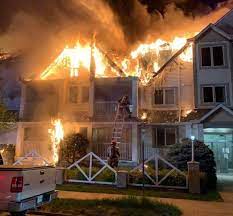 August 2023
August 2023
A September 2020 fire at 200 Wellesley St. E. changed how high-rise fires are fought in Toronto.
It started on the 24th floor after a cigarette landed on a balcony igniting hoarded paper and books. The resident wasn’t home at the time but his front door was partially open because of debris in the home. Hoarded papers were fuel for the fire. Lights were melting. Aluminum and plastic were dripping from the ceiling. There was no visibility.
There was no sprinkler system – one of the most effective ways to prevent the spread of fire in a high-rise. The building was constructed prior to 2010 when they were first required. Residents were trapped in their suites and calling 911 while confusing heat and smoke coming through doorways and ducts with fire.
The fire burned out of control for six hours. Two of three firefighters on the floor ran out of air, collapsed and had to be rescued.
Events that day changed how the fire department deploys personnel, how much air they carry, and which trucks arrive on the scene when an active fire is confirmed. Lessons learned that day could very well save your life.
While water now causes more damage than fire, fire is the cause of more fatalities. During 2020, high-rise buildings accounted for more than half of all fire fatalities.
High-rise residential buildings are constructed so that one unit in a high-rise can be destroyed without affecting any other units or the integrity of the building. This only works if building systems are maintained and residents don’t circumvent their protective features.
Major Fires are Rare
Major fires are rare because of modern building safety systems. Concrete walls and floors don’t burn. There are fire-alarm systems, fire-rated doors and sprinkler systems. These life safety systems are incorporated in construction codes and provincial fire code regulations. Routine inspections and maintenance are required.
High-rise residential buildings are constructed so that one unit in a high-rise can be destroyed without affecting any other units or the integrity of the building. This only works if building systems are maintained and residents don’t circumvent their protective features.
Wind Driven Fires
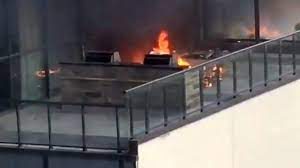 Wind-driven fires are more problematic in high-rise buildings as wind speed increases with height. They are recognizable by smoke exiting windows with the hallway acting as a fireplace chimney. High-rise fires must be fought indoors rather than from a distance while evacuating hundreds or thousands of residents. Open doors make fires more dangerous.
Wind-driven fires are more problematic in high-rise buildings as wind speed increases with height. They are recognizable by smoke exiting windows with the hallway acting as a fireplace chimney. High-rise fires must be fought indoors rather than from a distance while evacuating hundreds or thousands of residents. Open doors make fires more dangerous.
Heat currents from a fire in one suite travelling down a corridor can kill instantly. A 1995 fire began in a couch in a 5th floor unit of a 30-storey rental building, near Yonge St. and Sheppard Ave. The resident opened his balcony door to vent smoke. Neighbours assisted but were unable to put out the fire. Everyone evacuated and left the suite door open. Wind entering through the open balcony door and blowing through the fire pushed heat and smoke into the hallway. Six people died after being overcome by smoke in the stairwells.
Wind-driven fires travel from windward to leeward in a building. Open or missing doors and windows create a path for fire to follow. Anyone in the flowpath is in greatest danger while other areas can remain free of smoke and heat. Units on the same side of the building, protected by the same wind that feeds the fire, are safest from smoke and heat. Anyone on the opposite side of the unit on fire are at greatest risk, particularly if they open both a window and door thus creating a new flowpath for the fire.
The unit’s door was left open which allowed the fire to spread uncontrolled. Heavy smoke filled the hallways making it impossible for many to escape and most victims succumbed to severe smoke inhalation. The risk of suffocation was too great for stairwells to be used.
Keep Doors Closed at all Times
A January 2022 fire that killed 19, one of the deadliest ever in the United States, was caused by a faulty space heater. The unit’s door was left open which allowed the fire to spread uncontrolled. Flames were seen coming out of apartment windows as smoke filled the building. Heavy smoke filled the hallways making it impossible for many to escape and most victims succumbed to severe smoke inhalation. The risk of suffocation was too great for stairwells to be used.
Unit doors, and fire doors in hallways, are designed to delay or prevent the spread of smoke and fire. Had the unit kept their door closed, spread of fire and smoke would have been slower thus allowing many more to escape.
Rules for Dealing with Fires
Rules about how to deal with fires have changed, partially the result of experiments in abandoned high-rises. It is no longer standard practice to evacuate a building by the nearest stairwell.
If a fire alarm sounds, residents should remain in their unit, keep doors and windows closed, and wait for instructions from firefighters through the building’s intercom system. This is safer than attempting to evacuate using a stairwell where it is more likely to be overcome by smoke.
If your unit is on fire then leave immediately and close the door behind you but don’t lock it. Exit the building by the nearest stairwell. Do not go up to the roof or to a mid-level terrace from which there may be no escape.
 Everyday habits need to change. All unit doors should remain closed except when entering and exiting a unit. There are no exceptions for airing out a unit from cooking odour or smoke of any kind. Doors that don’t close properly should be repaired. With hundreds of people living under a single high-rise roof, no single individual should be allowed to jeopardize the safety of others should a fire occur.
Everyday habits need to change. All unit doors should remain closed except when entering and exiting a unit. There are no exceptions for airing out a unit from cooking odour or smoke of any kind. Doors that don’t close properly should be repaired. With hundreds of people living under a single high-rise roof, no single individual should be allowed to jeopardize the safety of others should a fire occur.



